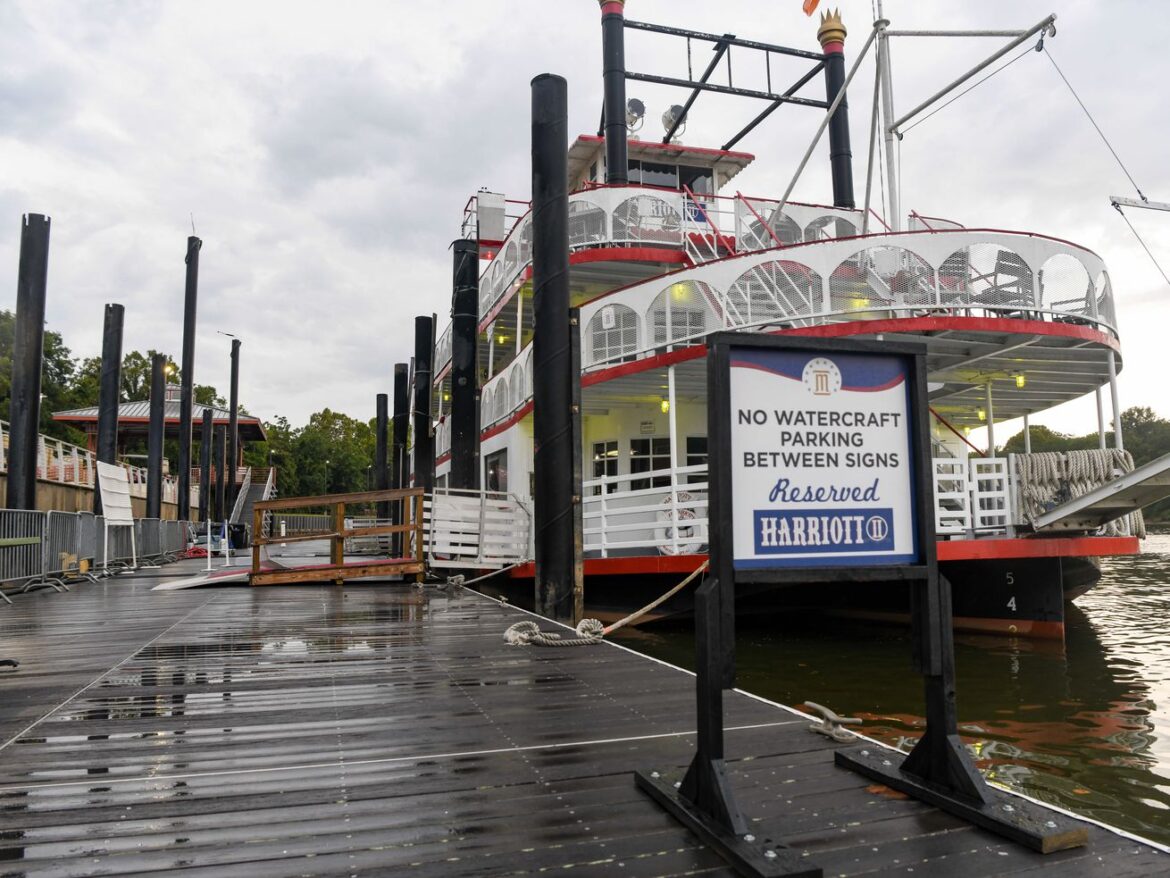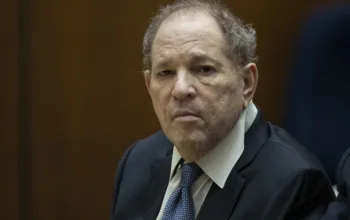The viral fight valorized Black resistance — and punctured Jason Aldean’s racist “small town” narrative.
One of the key facets of extremism is the element of plausible deniability. As such, “dog whistles” — coded language used to mask a deeper extremist or discriminatory rhetoric — have become a pervasive part of the way we talk about politics and the culture wars. They’re also exhausting to unpack.
No matter how diplomatically or plainly you point out the underlying racism or bigotry of a specific image or turn of phrase, there’s always someone eager to take the code literally, to dismiss its context, its subtext, and clearly harmful impact. They’re happy to claim this is just what happens when you pucker your lips and blow, and any hateful dogs that come running are just a coincidence.
Then a song comes along like country singer Jason Aldean’s risible “Try That in a Small Town.” The lyrics and accompanying video are layered with references to Black Lives Matter protests, sundown towns (“see how far you make it down that road”), and white protectionism (“good ol’ boys … we take care of our own”). The video’s main location was no less than the site of historical lynchings, a particularly unsubtle jab. Inevitably, however, when you attempt to illuminate this racist imagery, a “Try That in a Small Town” defender will show up. They will assert that the whole thing is really just about, as Aldean himself tried to assert, “the feeling of community” and the desire for a return to “a sense of normalcy.”
Normal, to Aldean, seems to be a reality where Black protesters don’t disrupt the everyday lives of white citizens — even if those citizens are, as the song suggests, stockpiling guns and turning paranoid eyes on any and all outsiders. This attempt to reframe socially sanctioned racism as “just a community looking out for itself” has long been a part of the discriminatory tactics used against Black Americans, from lynch mobs to the racist, KKK-apologetic Birth of a Nation, to the legal defenses used by white men who murder unarmed Black ones. It’s a cultural tactic used to not only disenfranchise Black Americans, but to then gaslight them about their own reality and experience. It’s a tactic that turns aggression into “self-defense.”
It’s one big reason, out of an infinitude of reasons, that the world was transfixed earlier this week when video surfaced of a group of Black boat workers in Montgomery, Alabama, appearing to voraciously fight back after a group of white pontoon boaters began attacking a Black boat captain.
What happened at the Montgomery boat brawl
The white boaters, coming from nearby Selma, had allegedly repeatedly caused trouble at the dock by parking their pontoon illegally in the spot reserved for a large tourist riverboat, the Harriott II. On Sunday, August 5, the riverboat had been waiting for around 45 minutes, with passengers aboard, to dock. Damien Pickett, the riverboat’s first mate and co-captain, disembarked in order to move the pontoon boat himself. In response, according to reports, at least three of the boaters attacked Pickett, punching him in the face, beating and kicking him.
This sounds like an all-too-familiar tragedy in progress: white-on-black violence, motivated by a sense of racist entitlement. Speaking to the Daily Beast after the incident, the boat’s captain, Jim Kittrell, stressed that the only motive appeared to be racial: “It makes no sense to have six people try to beat the snot out of you just because you moved their boat up a few feet. In my opinion, the attack on Damien was racially motivated.” Kittrell’s assumption seems to be bolstered by eyewitness testimony: One bystander, a victim’s family member, said in a sworn statement that she heard one of the white men drop the n-word before the fighting began.
It’s important to consider this incident in the broader context of Montgomery’s history, as well. Montgomery, one of the major historical fronts of the civil rights movement, is no stranger to racialized violence. It was there, in 1954, that a young Martin Luther King Jr. took up pastorship at a local church, where he became a spokesperson for the Montgomery bus boycotts alongside Rosa Parks. Through boycotts and years of sustained activism amid tense civil unrest, Montgomery protesters successfully challenged the rule of Jim Crow in the South and ultimately changed the nation. Montgomery also saw devastating segregationist violence throughout this period, including one of the most violent moments in the civil rights movement, “Bloody Sunday.”
In 2023, coming after a cultural period of intensifying racialized protests, a group of white people whaling on an unsuspecting and defenseless Black man could have led to tragic consequences or, at the least, traumatized victims and onlookers.
What the video shows happening next, however, flipped the script: Seeing one of their colleagues being attacked, other Black boat workers rushed in to defend him and fight back. Bystanders also joined in, with one teen now known as “Black Aquaman” famously jumping into the water and swimming across the dock in order to help. One man, a person known to the internet as “Folding Chair Guy,” gained instant fame when he went after the three attackers with, you guessed it, a folding chair.
The suddenness of the fight, combined with the enthusiasm of the brawlers, the glee of the onlookers, and the fact that everyone had phones out recording the incident, made the Montgomery brawl — dubbed the Alabama Sweet Tea Party — into an immediate viral sensation. It produced everything from evocative Twitter reactions to a live swimming pool reenactment to a remix of Ernie Barnes’s iconic painting of Black partiers, Sugar Shack. The folding chair was instantly memorialized.
Most extraordinarily of all, no one rushed to mete out punishment for the Black dock workers who fought back. Though multiple fighters were briefly detained, all were released. Folding Chair Guy, real name Reggie Gray, has been dodging police requests to speak with him, but no one seems to be pushing too hard for his arrest either, although the investigation into the brawl is ongoing. At a press conference, Montgomery Police Chief Darryl Albert notably didn’t attempt to distort the power dynamics, stating simply that “several members of the Harriott II came to Mr. Pickett’s defense.” The three white attackers turned themselves in to police custody after warrants were issued for their arrest.
The prevailing public mood around the Montgomery brawl has not been racist backlash or anxiety over such a backlash, but rather deep satisfaction at a battle in which justice seems to have prevailed: The perpetrators were rounded up and the victims received a rousing defense from the community. For once, the marginalized underdog — a Black man being ganged up on by a group of white bullies — came out no worse for wear; Pickett reportedly walked away from the fight with only a headache and some minor cuts and bruises.
What it means to try that in a (not entirely) small town
The collective sense of satisfaction might be exactly the kind of communal security Jason Aldean was attempting to portray in “Try That in a Small Town.” This was, in fact, almost the exact scenario Aldean says he was attempting to capture in his ode to small-town vigilante justice: a group of outsiders come into town, refuse to obey the local customs or follow the local laws, and then get their asses duly whooped by the town citizenry.
While Montgomery is not a “small” town, its history of banding together to rout out racists is deeply relevant here. Montgomery is precisely the type of heartland town that deserves to have songs written about the bravery and commitment of its citizens to protecting one another, to fighting back against injustice — to defending its people and its way of life at all costs. But there’s plenty of reason to suspect that Montgomery wasn’t the kind of town — and this wasn’t the kind of scenario — that Aldean had in mind. We know that celebrating moments of Black defiance is incredibly rare in American history.
The Montgomery brawl represents an extraordinary triumphant moment in which Black resistance has been seen as a just force rather than a threat to the white establishment. Black shows of defiance, even when used in clear self-defense, are all too often wielded against the victim. Historically, instances of rebellion such as that of slave revolt leader Nat Turner have been used to justify more violence against Black people. Today, in cases where Black victims of police violence attempt to seek justice, the legal doctrine of “qualified immunity” — in which police have almost unlimited power to use force without fearing a lawsuit in response — is invoked.
The entire justice system, in other words, too frequently gets weaponized against Black Americans who assert themselves in the face of threats to their safety, property, and human dignity. Black citizens are rarely allowed to be “heroic through defiance,” to reclaim Black rebellion as an act of valor, or to wield reactive violence as a form of patriotism and idealism. That framing of violence is almost exclusively reserved for the kind of white supremacists Aldean’s song seems interested in protecting.
The Montgomery brawl was subversive, shocking, even refreshing in its memeability — not because violence is something to be enjoyed, but because the long arc of history, honed to oppress, simply could not withstand the glorious righteous fury of a bunch of boat workers who’d been forced to stand around for nearly an hour thanks to some entitled jerks who refused to follow the dock rules.
It’s worth asking whether the public’s reaction to the brawl would have been as laid back if the stakes hadn’t been so clear. These Black dockhands, after all, were working in the service of something undeniably anodyne, even arguably white-coded: a cruise on a 19th-century riverboat, with all the ties to antebellum history such a tour implies. Would this minor moment have been framed as heroic had the victims been trying instead to dock a summer cruise full of raucous Black partiers? If the dockhands had all turned out to be Black Lives Matter activists, would their rebellion have still been valiant?
It may seem silly to ask these kinds of questions about a heavily memed brawl involving a folding chair and a person known only as “Black Aquaman,” but this is exactly when we should be asking them. It’s the constant policing and challenging of ordinary Black existence by the white establishment — through microaggressions, or macro-aggressions, like writing an entire song about how badly you want to lynch outsiders — that leads to the fomentation of anger that spills over into protest. That then gets used to justify more policing and challenging of ordinary Black existence.
That’s why the Montgomery brawl was, on a level, a brilliant deconstruction of the lie behind “Try That in a Small Town”: It effortlessly destroyed the song’s flimsily veiled conceit that the “community” that needs protection is that of innocent white people being besieged by scary Black protesters.
Perhaps that’s also why Aldean’s song, though it had a brief stint atop the Billboard Hot 100 after all the controversy surrounding it broke, immediately plummeted a full 20 slots. This was reportedly one of the biggest drops in history, and the biggest ever for a song that didn’t debut at No. 1.
The deepest irony of all this is that Jason Aldean — who grew up in the big town of Macon, Georgia, and now resides in the bigger town of Nashville — tries to court “that small-town vibe” without ever delving into what the vibe actually is. Anyone who’s from a small Southern town understands exactly what he’s referencing.
Like anywhere, small towns are full of wonderful individual people and affirming communities. But also like anywhere — and perhaps even a little more often than anywhere, given their size and emphasis on the collective — they can be subject to toxic groupthink. When the idea of a small town is freighted with notions of an “us” and a “them,” notions that can distort a sense of self and what exactly needs to be defended, they can also be as alienating, dangerous, and violent as anywhere else on earth.
That’s why narratives of Black defiance are all the more crucial as representations of what real community can be. A sweet tea party, indeed.



